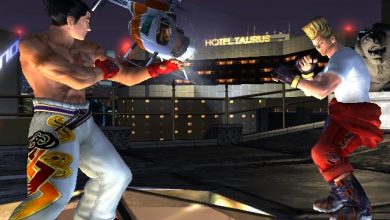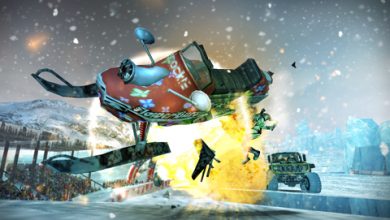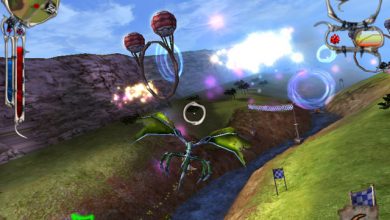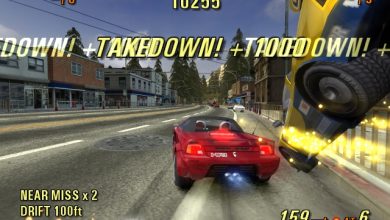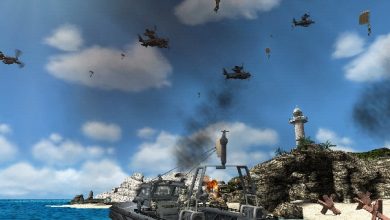Zone of the Enders: The 2nd Runner Review
Speed, Grace, Beauty. It’s got it all.
The first Zone of the Enders (ZOE for short) was certainly a noteworthy game. In the early days of the PS2, AAA titles were a little bit sparse. ZOE promised lighting fast combat, beautiful graphics, and a storyline supervised by Metal Gear scribe and producer Hideo Kojima. And while it delivered on some counts, a lot of gamers felt that it was a bit lacking, and it eventually became much more renowned for the included Metal Gear Solid 2 demo. The sequel fares much better though, delivering a surprisingly filling action experience.
Content Index
Story
In the far future, Earth has proven to be too small to support the whole of humanity, and they have taken to the stars. The humans who have to live on other planets are referred to as “enders” by earthers, and generally looked down upon and oppressed. In order to fight back at their oppressors, various rebel factions such as BAHRAM (whose acronym escapes me) have started to build humongous humanoid mechs called orbital frames to fight back. The story in The Second Runner basically serves to tie up the destinies of the two most powerful frames, Jehuty and Anubus, and their connection to BAHRAM’s huge mobile fortress Auuman.
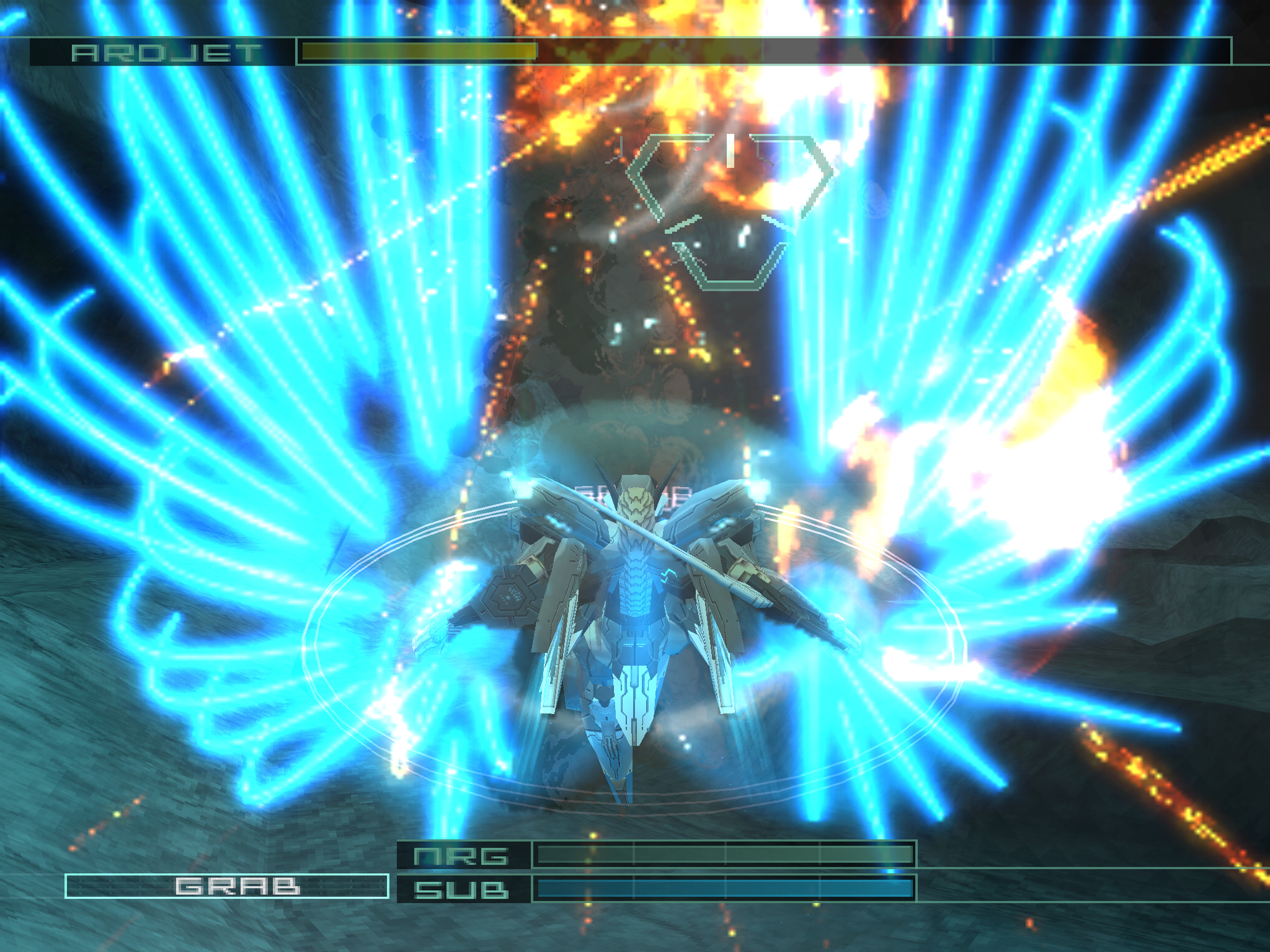
Kojima’s penchant for overwrought moral drama has thankfully been kept to a minimum, and the painfully obvious moral lessons from the first game are nowhere to be found. ZOE2 is mostly about the characters, their relationships, and their pasts (something I wish MGS2 had focused more on). The story is aided greatly by Jehuty’s new runner, Dingo Egret. Unlike the last runner, who was whiny, indecisive, and generally unlikable, Dingo is refreshingly indifferent to the plights of both Earth and Mars. And if it weren’t for a spicy bit of blackmail, he would have nothing to do with either of them. The storyline in this game is all portrayed through glossy anime-style cut scenes, and moves along at a pretty brisk clip. It’s not something worth pondering over, but you’re usually given more than enough reason for getting from point A to point B.
Gameplay
The gameplay in ZOE has always been very fast, yet very easy to learn. Though you are given absolute control over your frame, Jehuty handles like a dream. Square attacks (which is based on proximity; if you are close you will slash, and if you are distant, you will fire) and circle uses sub weapons. You can move along the x and z planes with the right stick, ascend, and descend with the triangle and circle buttons. The shoulder buttons control things like dashing, locking on, and blocking. After a quick tutorial, Jehuty blasts off, and you’re ready to go. Zipping around, blasting, blocking, targeting; it all comes naturally. Sure, the fighting has been criticized for being too simplistic (you’ll mostly just be pounding the buttons), but so what? The beauty in it is in how easy everything is to do.
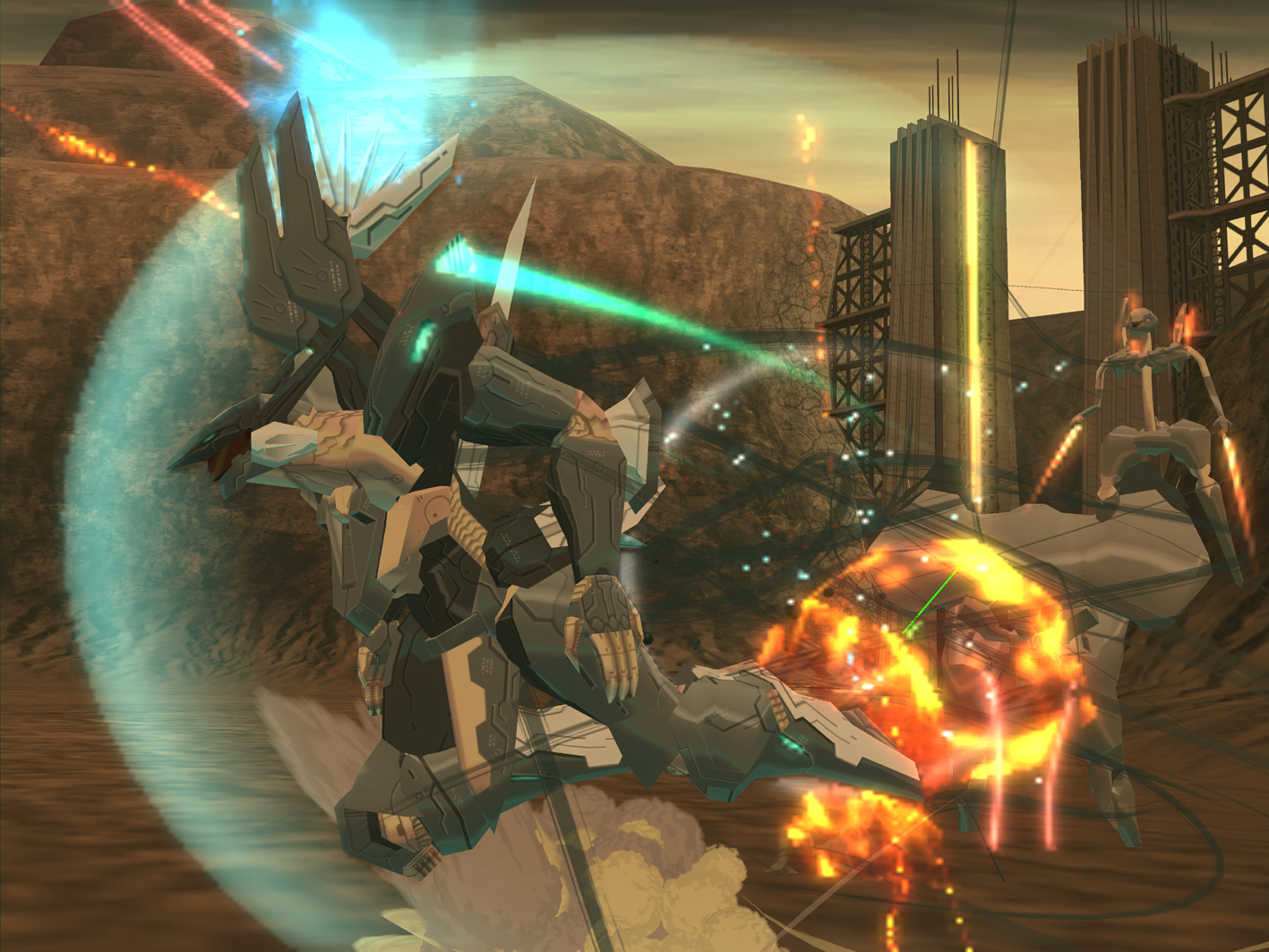
There are a couple new maneuvers in the game, but most are of little real consequence. Jehuty now has the ability to grab things, which you’ll use for a lot of puzzles, but rarely in actual combat. There are about twice as many sub weapons as there were in the first game, but they are just as underpowered and useless now as they were then. All sorts of lasers, shields, and beams, but with the exception of the vector cannon, there aren’t really any times where they are really necessary. Combos are slightly more interesting now, as you can end any sword combo with any of the face buttons which will knock enemies in one of four directions, and hopefully into a wall for double damage. But of course, most battles take place in wide-open spaces with little opportunity for this.
While the majority of the first game simply revolved around fighting, the mission variety in ZOE2 is much better. There are escort missions, huge melee offensives, and a systematic raid against a huge air fleet. The boss battles are much more interesting too. Most of the bosses in the first game were simply huge warships that you dodged and shot back at. But in ZOE2, most of the bosses are other mechs that are about the same size as Jehuty, ensuring a much quicker pace. Each battle has some unique aspect to it as well. My favorite was a fight that took place in total darkness, with only Jehuty’s voice to guide you.
Graphics
Great, great great, all around great. The first ZOE was certainly a good-looking game, but the sequel trumps it in almost every way. The environments are much larger, and much more varied. You will no longer be fighting in the same city area over and over, and this time Jehuty travels across tundra, deserts, and even runs across speeding trains and an armada of battle ships. There can be an absolutely insane amount of enemies onscreen at once (over 100) with very little slowdown (considering). The anime cut scenes load almost instantly, with no pauses between the action, and if memory serves, ZOE2 has no loading time at all outside of saving the game.
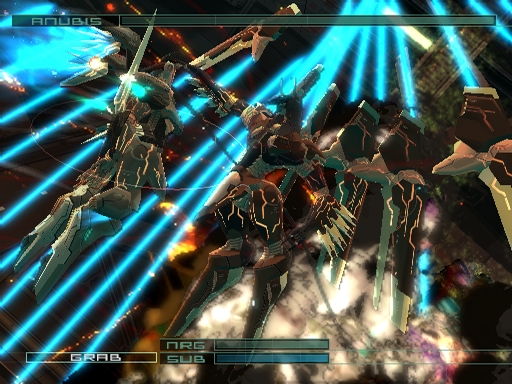
Two particular things of note: the frames, and the particle effects. The frames are all big and detailed, and sport nifty little effects, like visible, pulsating, energy “veins” running all across their body. The character design is absolutely excellent, and each frame has an insane amount of personality. Nephtis has a shimmering halo that either trails along behind it or spins like a frisbee. Anubus has a long spiked, prehensile tail twitches about excitedly before battle. Leo’s Vic Viper can actually transform in and out of jet mode, just like a Transformer. The mechs in ZOE2 aren’t the hulking beasts of most anime, but rather speedy, energetic fighting machines. The particle effects in ZOE2 are simply the best I’ve ever seen. Smoke trails off everything, and frames kick up realistic clouds of dust that slowly dissipate into swirls of particles. Sparks fly off everything, and there are probably hundreds of different energy signatures from the various beams, swords, and shots that the mechs emit. I had hoped that I could go my entire life without using the phrase, “a feast for the eyes,” but alas. ZOE2 is a feast for the eyes.
Sound
Talented voice actors, crappy script. The same thing happened in The Bouncer. The actors all put emotion into their lines, but since the writing was so poor, it’s all for naught. It’s really too bad, since Konami usually puts out stellar translations. Be it an epic like Suikoden 3, or something simpler, like one of the GBA Castlevania games, I’ve had nothing but good things to say about Konami translations. But for whatever reason (possibly due to the strict lip synching requirements of the anime cut scenes), many of the lines in the game are inane, confusing, or simply things no rational human would ever say. Once again; the actors did a great job, but it’s just a little hard to tell.
The soundtrack on the other hand, is all class. It has a very eastern feel to it, with lots of chanting and lots of drums, but at the same time, it’s also very modern. A lot of the tracks are extremely catchy, and ZOE2 contains some of the best boss music ever. It totally revs you up; you’re just ready to rip your enemies’ arms off with your teeth. Good stuff.
Replay Value
ZOE2 will probably take about 7 hours to complete the first time through, which is better than the first game’s 4 and a half hour mark, but still a little light for a game of this type. As is the fashion in action games these days, you are given a letter ranking at the end, but you’ll probably only care about that if you absolutely love the game. I’ve certainly never given them much notice. Fortunately, there is much more to do after the main quest is done this time around. Primarily there are a bevy of extra missions, including timed events, boss battles, and even survival bouts. There are simply tons and tons of these “ex missions,” and to complete 100% of them you have to beat each one in all of Jehuty’s various forms (normal, v. 2, stripped, etc). If you can beat enough of these, you can unlock a really clever Zoradius mini-game starring Vic Viper. While it uses the current ZOE graphics engine, it plays like an old-school shooter, right down to the crappy NES midi music. It’s certainly not a stand-alone game or anything, but it’s pretty addictive if you can get into it.
Also in the replay department is the ill conceived versus mode. It’s a nice idea in theory (a 2p mode starring all of the boss frames in the game, all with complete move sets) but it’s far too unbalanced to be worth spending much time on. Since ZOE really wouldn’t work in a split screen mode, the camera can only ever be centered behind one character, giving one player a crushing advantage over the other at all times. The character balance isn’t great either, and out of the 10 selectable frames, only three or so are evenly matched. ZOE isn’t Tekken 4 either, and strategies range from keep away, to “who has a faster close-range strike rate?” I guess this isn’t an idea totally without potential, but it would be far better suited to some kind of link, or online play.
In Closing
This is one sequel where the developers obviously took player criticism to heart. The protagonist is much cooler, the missions are more varied, the quest is longer, the story is better, and there is simply much more to see and do. It’s not perfect (still a little short, combat is still too simple), but if this trend keeps up, Zone of the Enders 3 will be.

